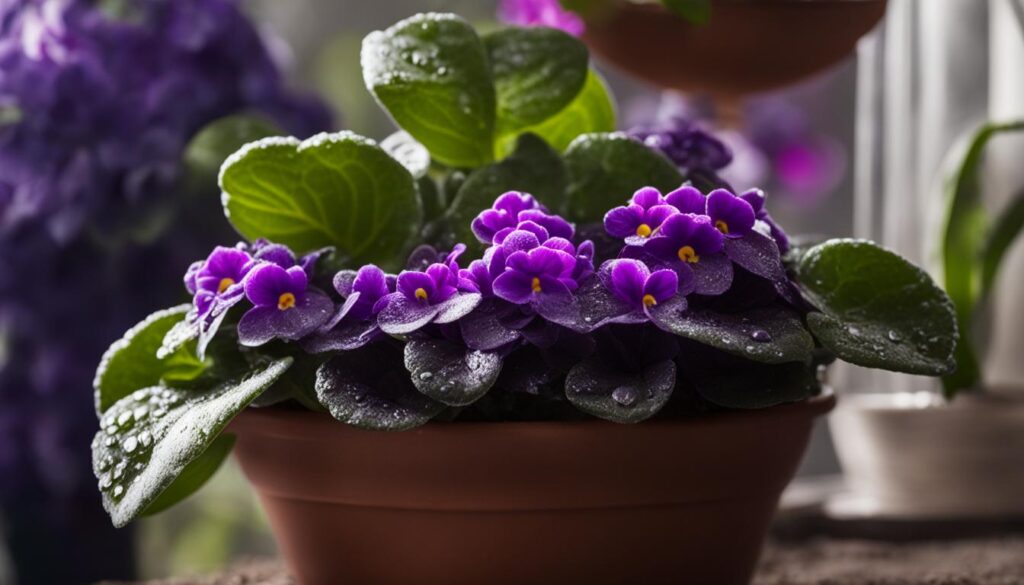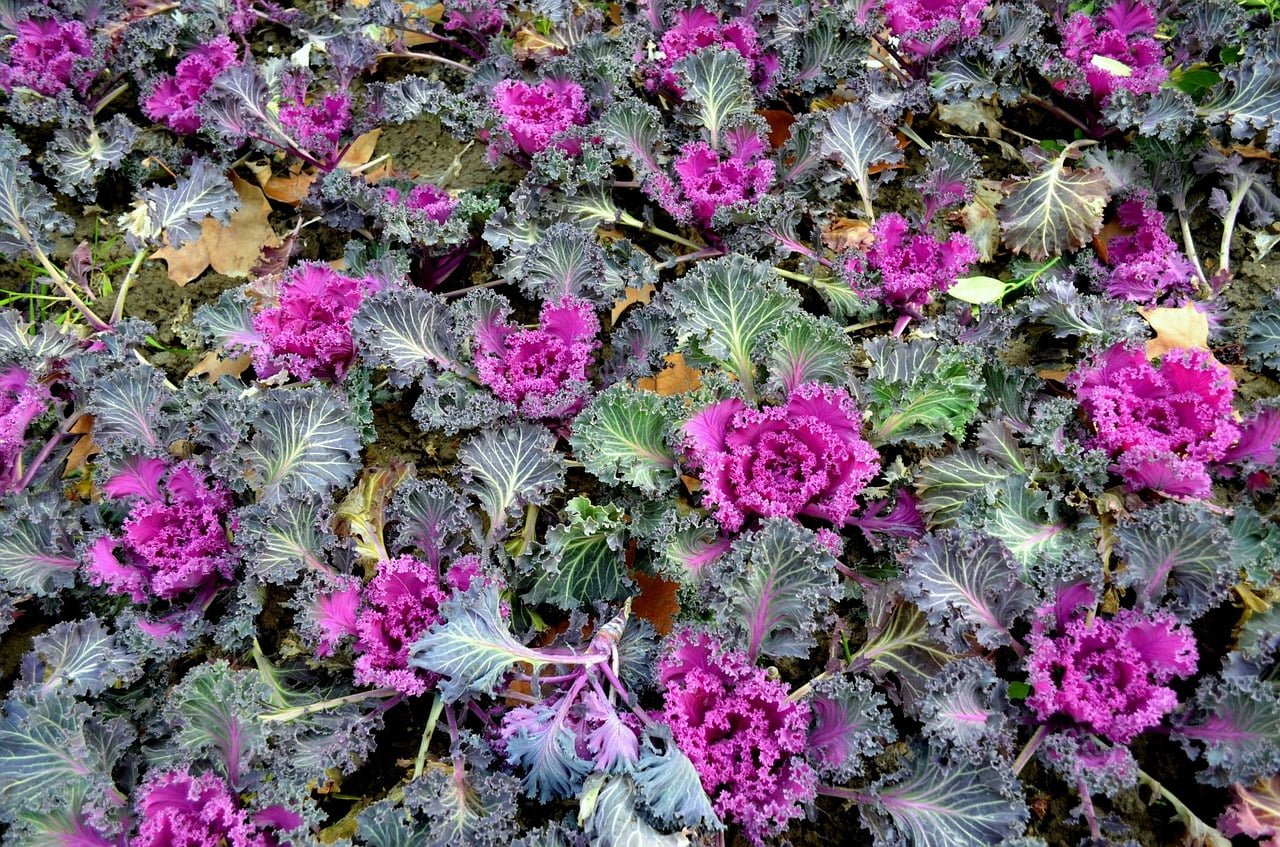Achieving vibrant and colorful blooms from your African violets begins with understanding the plant’s unique nutritional requirements. By selecting a suitable fertilizer for African violets that meets their specific needs, you can effectively enhance your houseplant nutrition practices and promote plant health and bloom enhancement in these popular flora. Through water-soluble fertilizers and a balanced nutrient blend, taking care of African violets becomes more manageable and rewarding.
Key Takeaways
- Choose a water-soluble fertilizer tailored to African violets’ unique nutritional needs.
- Ensure a balanced blend of macro- and micro-nutrients to support bloom enhancement.
- Avoid using fertilizers with urea, which can cause root burn and inhibit blooming.
- Fertilize African violets every 4 to 6 weeks during active growth, excluding winter months.
- Moisten soil before applying diluted fertilizer for maximum nutrient absorption.
- Consider organic alternatives such as worm castings, compost tea, or fish emulsion for a more environmentally friendly approach to African violet care.
- Address nutrient deficiencies promptly by identifying telltale signs such as yellowing leaves and insufficient blooms.
The Essential Role of Fertilizer in African Violet Care
African violets, with their lush foliage and vibrant flowers, make for an attractive addition to your indoor garden. To ensure their continued growth and bloom, it is vital to cater to their unique nutritional needs. Providing them with a water-soluble fertilizer formulated explicitly for African violet care is crucial in achieving this.
Understanding the Nutritional Needs of African Violets
Like any healthy diet, African violets thrive on a balanced meal plan rich in both macro- and micro-nutrients. The primary plant nutrients comprise of Nitrogen (N), Phosphorus (P), and Potassium (K) – known as the N-P-K ratio. African violet food also requires a blend of secondary nutrients like Calcium, Magnesium, and Sulfur, as well as trace elements such as Iron, Manganese, and Boron.
In order to supply these essential nutrients and promote plant growth, African violets demand a specialized fertilizer. Opting for a water-soluble fertilizer specially designed for African violets ensures the plants receive the nutrients in a form they can effectively absorb.
The Impact of Proper Fertilization on Blooming and Growth
Proper fertilization plays a critical role in both the blooming process and overall growth of your African violets. Flowering can be energy-intensive for the plant, and replacing the spent nutrients is crucial for maintaining a consistent bloom output.
- African Violet Fertilization: By ensuring a consistent fertilizing regime, you can guarantee your African violets receive enough nutrients to support long-lasting flowering and lush foliage.
- Blooming: Successful blooming is a clear sign that your African violets are receiving the right levels of nutrients, adjusting the fertilization as needed can transform poor bloomers into flourishing plants.
- Plant Growth: Sufficient plant nutrients encourage the growth of vibrant and healthy leaves, a clear indication that your African violets are in good health.
It’s essential to choose a fertilizer without urea, as this can cause damage to the sensitive roots of African violets. Opting for a non-urea fertilizer formula can make a significant difference in your plant’s overall health and appearance.
| Metric | Consistent Fertilization | Poor Fertilization |
|---|---|---|
| Blooming | Continuous, vibrant blooms | Infrequent, lackluster blooms |
| Plant Growth | Healthy, lush foliage | Stunted growth, lack of vigor |
| Nutrient Impact | Well-fed, robust plant | Nutrient deficiencies, weak plant |
In summary, understanding the nutritional needs of your African violets and providing them with a water-soluble fertilizer designed for their specific requirements will significantly impact their growth, health, and blooming potential. Improper or inadequate fertilization can adversely affect your African violets, leaving them susceptible to stunted growth and diminished blooms.
Choosing the Right Fertilizer: The N-P-K Ratio Explained
The N-P-K ratio on African Violet Fertilizer packages represents the primary nutrients nitrogen (N), phosphorus (P), and potassium (K, from its chemical symbol) that are crucial for plant nutrition balance. This ratio is expressed as a series of three numbers, which signify the percentage of each element in the fertilizer. Choosing the right fertilizer for your African Violets is all about finding the correct balance of these essential nutrients.
Commonly recommended N-P-K ratios for African Violets include 20-20-20 and other variations that cater to the specific needs of the plants. Nitrogen promotes leaf growth, phosphorus encourages bloom production, and potassium aids in root development and overall plant health. Striking the proper balance between these nutrients ensures that African Violets receive comprehensive nutrition to thrive and maintain their vibrant blooms.
| Nutrient | Function in African Violets |
|---|---|
| Nitrogen (N) | Promotes leaf growth |
| Phosphorus (P) | Encourages bloom production |
| Potassium (K) | Aids in root development and overall plant health |
When purchasing a fertilizer for African Violets, consider the following factors:
- **N-P-K ratio**: Look for a balanced formula like 20-20-20 or one tailored to the specific needs of your plant.
- **Water-soluble**: This type of fertilizer ensures nutrients are readily available for plant uptake.
- **Urea-free**: Urea can cause root burn in African Violets. Choose a product that utilizes other nitrogen sources like ammonium nitrate.
Maintaining a balanced nutrient profile in your African Violets will promote vigorous growth and stunning floral displays. By understanding the importance of the N-P-K ratio and how these essential nutrients impact your plant’s health, you can make an informed decision when choosing the ideal fertilizer for your African Violets.
Optimal Fertilizing Techniques for African Violets
The Best Time for Fertilizing Your Plants
To ensure effective Fertilizing African Violets, the Optimal Fertilizing Time is during their active growth phase, which typically occurs in the spring. It is advisable to avoid feeding your plants during the winter months, as this can cause unnecessary build-up of nutrients in the soil. While some gardeners recommend refraining from fertilizing during blooming periods, others believe that providing additional nutrients can help replenish those spent by the plant during this time.
Application Methods for Maximized Benefit
For successful African Violet Care, take the following steps when developing your Plant Feeding Schedule:
- Moisten the soil: To facilitate nutrient absorption, moisten the soil before applying fertilizer. This helps ensure that the nutrients are readily available for the plant to take up, thus Maximizing Plant Benefits.
- Choose the right formula: Either liquid or soluble powder fertilizers can be used for instant nutrient delivery, allowing the plant to access the essential nutrients as needed. Be sure to consult the manufacturer’s guidelines for proper dilution rates and follow their recommendations closely.
- Flush the container quarterly: Regularly flushing the container helps minimize toxic salt build-up, which can occur due to the repeated application of fertilizers. By performing a thorough flush every three months, you can prevent harmful accumulations that can harm your plant’s health.
| Fertilizer Application Method | Benefits | Tips |
|---|---|---|
| Liquid Fertilizer | Instant nutrient delivery for efficient absorption by the plant. | Dilute according to manufacturer’s directions; may need more frequent application. |
| Soluble Powder Fertilizer | Convenient storage and mixing; also allows for instant nutrient delivery. | Mix with water as instructed by the manufacturer; store powder in a cool, dry place. |
| Periodic Flushing | Maintains healthy soil conditions by minimizing toxic salt build-up. | Flush the container every three months for optimal soil health. |
By following these African Violet Care Tips and implementing an appropriate Fertilizer Application Method, your plants can enjoy healthy growth and blooming seasons throughout the year.
Organic Vs. Synthetic Fertilizers for African Violets
As a diligent African Violet caretaker, you understand the importance of providing your plants with the proper nutrients for optimal growth and health. In this section, we will explore environmentally friendly plant care and organic deficiency solutions by discussing the benefits and drawbacks of organic and synthetic fertilizers for African Violets.
Natural Alternatives for a Green Approach
A variety of organic fertilizers provide a natural fertilizing alternative while maintaining plant health. These options include:
- Worm castings: These nutrient-rich organic matter offer a nitrogen supply and can be used as a soil amendment or a top dressing for African Violets.
- Diluted compost tea: A well-balanced, nutrient-dense liquid fertilizer made from compost and delivered via watering or foliar spray.
- Fish emulsion: A nutrient-rich liquid fertilizer derived from processed fish, mainly supplying nitrogen and other essential nutrients.
- Bat guano: Known for its high phosphorus content, bat guano can be used to counterbalance the more nitrogen-focused organic options, leading to a holistic organic approach for African Violet care.
Addressing Deficiencies with Organic Solutions
Observing the signs of nutrient deficiencies in your African Violets is crucial to promptly addressing them and maintaining a healthy garden. Organic solutions can be calibrated to cater to your plant’s specific needs. Examples of deficiency symptoms and their corresponding organic remedies include:
| Deficiency Symptom | Nutrient Lacking | Organic Solution |
|---|---|---|
| Yellowing leaves | Nitrogen | Worm castings or fish emulsion |
| Lack of blooms | Phosphate | Bat guano |
| Smaller, discolored blooms | Potash | Wood ash |
Whichever organic solution you choose, it is essential to monitor your African Violets closely and adjust your organic fertilizer regimen to address the nutrient imbalances in your plants. By embracing a green approach to African Violet care, you can simultaneously promote plant health and contribute to environmentally friendly plant care practices.
Common Fertilizer Mistakes to Avoid with African Violets
African violets require adequate attention and care to ensure healthy growth and bloom. One crucial aspect of proper care is avoiding common fertilizer mistakes, such as over-fertilizing and neglecting the potential risks of salt buildup. This section outlines some of these mistakes and offers advice on how to prevent them.
The Risks of Over-fertilizing and Salt Buildup
Over-fertilizing African Violets is easy to do, especially since the plants respond well to regular feeding. However, this can lead to harmful consequences such as root and leaf burn. Over time, excessive fertilization can also inhibit vital nutrient absorption. To prevent these issues, follow the recommended feeding schedule and provide the right concentration of fertilizer specific to African violets.
Another common issue is the accumulation of salts in the soil, posing additional salt buildup risks to African violet health. Salt buildup can obstruct the plant’s ability to absorb water, leading to scorched leaves and overall decline of the plant. Flushing the soil periodically is an effective way to deter salt accumulation and maintain soil health.
Here are some additional tips to avoid these fertilizer mistakes:
- Choose a fertilizer designed specifically for African violets, adhering to the recommended N-P-K ratio.
- Moisten the soil before applying the fertilizer to encourage uniform absorption.
- Follow the recommended application rates and schedules provided by the fertilizer manufacturer, taking into account the plant’s active growth periods.
- Monitor your plants for signs of over-fertilization or salt buildup, adjusting your care practices accordingly.
By following these recommendations, you can ensure that your African violets receive the nutrients they need without the potential dangers associated with common fertilizer mistakes.
Signs of Nutrient Deficiencies and How to Respond
Nutrient deficiency signs in African Violets can manifest as yellowing leaves, halted flowering, or reduced blooms. These symptoms may indicate your plant is lacking essential elements such as nitrogen, phosphate, or potash. In this section, we will explore the common signs of nutrient deficiency, and the best ways to address these issues to optimize your African Violet Care.
- Yellow or pale leaf edges: This signals a deficiency in nitrogen. Nitrogen is an essential component of plant cell structure and is vital for leaf and stem growth.
- No flowers or lack of blooms: This can be due to insufficient phosphate levels. Phosphate fosters healthy root development and supports flowering processes in plants.
- Browning leaf tips or reduced blooms: This may suggest low potash levels. Potash strengthens plant cells, improving their resistance to disease, and is crucial for the formation of flowers and fruits.
Recognizing nutrient deficiency signs goes beyond just observing your plant’s appearance. It’s vital to analyze the plant’s overall health, addressing these symptoms with a tailored fertilizer response that replenishes the lacking element.
Fertilizer Response for Nutrient Deficiencies
Replenishing deficient nutrients can be achieved using balanced fertilizers explicitly designed for African Violets. Here is a breakdown of recommended N-P-K ratios corresponding to specific deficiencies:
| Nutrient Deficiency | Recommended N-P-K Ratio |
|---|---|
| Nitrogen | 24-14-14 |
| Phosphate | 15-30-15 |
| Potash | 12-12-25 |
Remember, it is essential to keep a close eye on your plant’s health throughout the African Violet Care process and respond accordingly to any nutrient deficiencies by tailoring your fertilizer application. Regularly adhere to the recommended fertilizing schedule and ensure that you provide your African Violets with the essential nutrients they need to thrive and remain resilient against potential diseases.
How Does Proper Watering Enhance the Effectiveness of Fertilizer for African Violets?
Proper watering african violets stepbystep is vital to maximize fertilizer effectiveness. Overwatering can lead to nutrient leaching, while underwatering can cause nutrient deficiency. By following a consistent watering schedule and ensuring the soil is evenly moist, African violets can better absorb and utilize the nutrients provided by the fertilizer.
Conclusion
Ensuring the health and dazzling blooms of your African violets comes down to understanding their nutritional needs, choosing the right fertilizers, and implementing effective fertilizing techniques. Providing a well-balanced diet of macro- and micro-nutrients is crucial in promoting vibrant blooms and enhancing the overall wellbeing of your precious houseplants.
While there are organic alternatives such as worm castings, compost tea, and bat guano, which offer environmentally friendly approaches to African violet nutrition, it is essential to keep an eye out for signs of nutrient deficiencies. By recognizing these indicators, such as yellowing leaves or lack of blooms, you can act swiftly to address these issues and promote vibrant, healthy growth.
In conclusion, taking a comprehensive approach to African violet care, which encompasses knowledge of their specific nutritional requirements, judicious selection of suitable fertilizers, and adhering to recommended fertilizing practices, will reward you with robust plant vigor and a stunning display of blooms. As you embark on this journey, continually honing your skills and knowledge, your African violets will most certainly thrive under your attentive and expert care.












